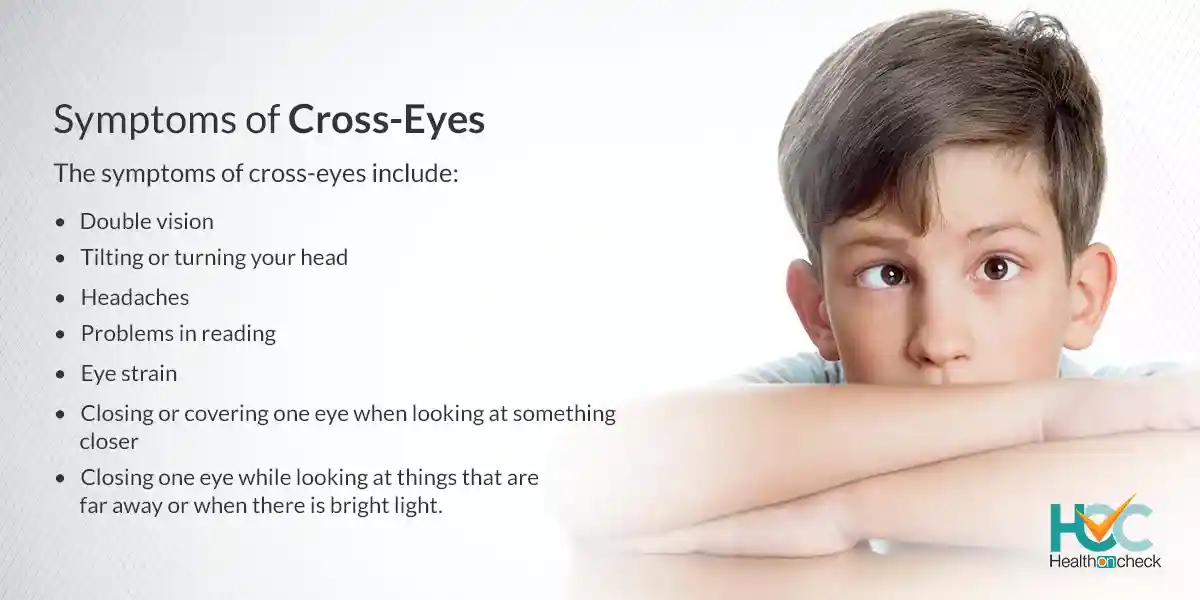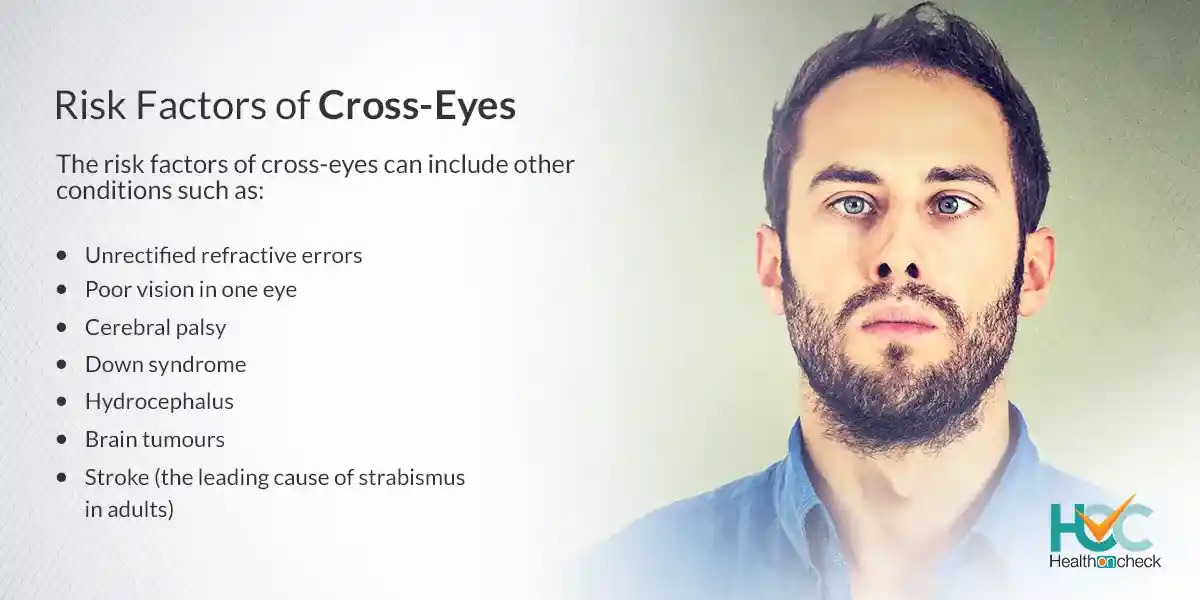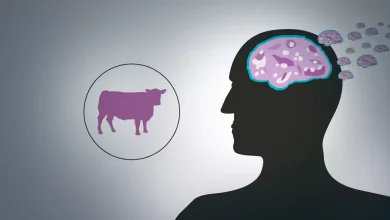All about Cross-Eyes?

What are Cross-Eyes?
Cross-eyes also known as strabismus is a condition where your eyes don’t align properly with each other. To be precise, one eye is turned in a direction that’s not similar to the other eye. Under normal circumstances, the six muscles controlling your eye movement work together and point both eyes in the same direction but if you have cross-eyes, these muscles have problems controlling eye movement and are not able to keep normal ocular alignment (eye position). While cross-eyes are more common among children, adults might also get cross-eyes. Usually, strokes lead to ocular misalignment in adults. Another factor is physical trauma. You can have cross-eyes in adults if you had cross-eyes in childhood that weren’t treated or were treated but returned or worsened.
What are the Types of Cross-Eyes?
There are various types of cross-eyes among which the most common are:
Accommodative esotropia: It usually happens in instances of uncorrected farsightedness and a family history of eyes turning in. Because the capability to focus is connected to where your eyes point, the extra focusing effort required to keep distant objects in clear focus might lead to your eyes turning inward.
Intermittent exotropia: In this form of cross-eyes, one eye will fixate (concentrate) on a target whilst the other eye points outward. Usually, your eye will alternate between looking straight and turning outward.
Infantile esotropia: Here babies show an inward turning of both eyes before they turn 6 months. There’s generally no significant amount of farsightedness available and glasses don’t repair the crossing. Inward turning might first occur on an irregular basis, but soon becomes persistent. It occurs when your child looks far away and up close.
What are the Symptoms of Cross-Eyes?

The symptoms of cross-eyes include:
- Double vision.
- Closing or covering one eye when looking at something closer.
- Tilting or turning your head.
- Headaches.
- Problems in reading.
- Eye strain.
- Closing one eye while looking at things that are far away or when there is bright light.
What are the Causes of Cross-Eyes?
Cross-eyes usually occur due to an issue with neuromuscular control of your eye movement, including your brain. In some cases, it occurs due to a problem with the actual eye muscle. Another reason is family history. Nearly 30% of children with cross-eyes have a family member with a similar complication.
What are the Risk Factors of Cross-Eyes?

The risk factors of cross-eyes can include other conditions such as:
- Unrectified refractive errors.
- Poor vision in one eye.
- Cerebral palsy.
- Down syndrome.
- Hydrocephalus.
- Brain tumours.
- Stroke (the leading cause of strabismus in adults).
- Head injuries, damaging the portion of your brain responsible for controlling eye movement, the nerves controlling eye movement, and your eye muscles.
- Neurological problems.
- Graves’ disease.
What are the Complications of Cross-Eyes?
The complications of cross-eyes include:
- Lazy eye (amblyopia) or permanent poor vision in the affected eye
- When your eyes look in two different ways, your brain receives two images. To avoid double vision, your brain might neglect the image from the turned eye, which can cause poor vision development in that eye.
- Blurry vision, affecting performance in school and at work, daily chores, and other activities you enjoy or a hobby.
- Eye strain.
- Fatigue.
- Headaches.
- Double vision.
- Poor three-dimensional vision.
- Low self-esteem (due to the embarrassment about how your eyes look).
- It might also cause a serious problem (such as a brain tumor) which might be overlooked if your doctor doesn’t diagnose and follow your cross-eyes properly.
How Cross-Eyes are Diagnosed?
Any child more than 4 months who seems to have cross-eyes shall have a complete eye examination by a paediatric ophthalmologist, with extra time given to examine how their eyes focus and move. The exam might include the following:
Medical history: It includes finding out the symptoms, family history, general health problems, medications taken, and any other possible reasons for symptoms.
Visual acuity: It includes reading letters from an eye chart or checking young children’s visual behaviour.
Refraction: Here eyes are checked with a series of corrective lenses for measuring how they focus light. Children need not be old enough to give verbal feedback while examining for glasses.
- Focus and alignment tests.
- Examination after dilating their pupils to examine the health of internal eye structures.
Other causes to consider that help to detect the cause and treatment of cross-eyes include:
- Did the problem occur suddenly or gradually?
- Was it there in the first 6 months of life or developed later on?
- Does it impact the same eye or switch between eyes?
- Is the degree of turning small, moderate, or large?
- Is it temporary or permanent?
What are the Treatment Options Available for Cross-Eyes?
The treatment:
Eyeglasses or contact lenses: Corrective lenses may help your eyes remain straight if you have uncorrected refractive errors, as they’ll require less effort to focus.
Prism lenses: Special lenses bend light that enters your eye to relieve double vision.
Orthoptics (eye exercises): It might help in some forms of cross-eyes, especially in the case of convergence insufficiency.
Medications: Your doctor might prescribe eye drops, ointments, or injections of botulinum toxin type A which can make an overactive eye muscle weak. These treatments might be used with — or in place of — surgery, based on your situation.
Patching: It’s given for treating amblyopia if you have it at the same time as cross-eyes. Improving vision might also control eye misalignment better.
Eye muscle surgery: Surgery is done in rare cases which alters the length or position of eye muscles so your eyes can be aligned perfectly.
You have to meet your doctor regularly for follow-up to check if you are responding well to treatments.
Living with Cross-Eyes
If you or your baby have cross-eyes, you should know that it can be treated successfully. In cases where it’s not treated then it might cause you embarrassment along with other problems because of the way it looks. But cross-eyes can be treated after growing up also. You should consult your doctor if you notice anything abnormal in your newborn because in some cases, cross-eyes can lead to some serious complications also.
Whom to Consult?
If you notice that you or your child has misaligned eyes, you should consult with an eye care provider. There are successful treatments available for cross-eyes. If you’re an adult, contact an eye care professional if you notice any problem with your vision, particularly if you’ve had a stroke or any type of eye injury.




